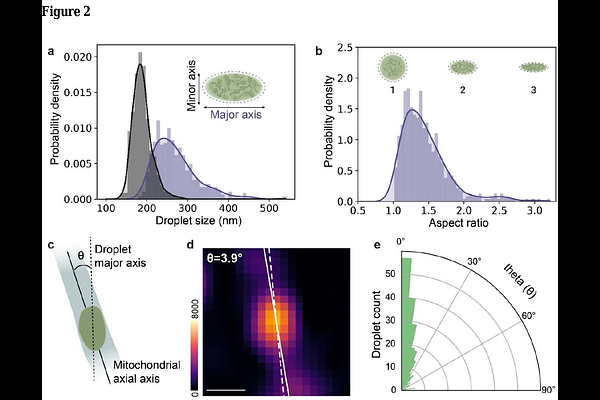Membranes arrest the coarsening of mitochondrial condensates

Membranes arrest the coarsening of mitochondrial condensates
Aththawala Gedara, S. V. B. D.; Penna, S. T.; Feric, M.
AbstractMitochondria contain double membranes that enclose their contents. Within their interior, the mitochondrial genome and its RNA products are condensed into ~100 nm sized (ribo)nucleoprotein complexes. How these endogenous condensates maintain their roughly uniform size and spatial distributions within membranous mitochondria remains unclear. Here, we engineered an optogenetic tool (mt-optoIDR) that allowed for controlled formation of synthetic condensates upon light activation in live mitochondria. Using live cell super-resolution microscopy, we visualized the nucleation of small, yet elongated condensates (mt-opto-condensates), which recapitulated the morphologies of endogenous mitochondrial condensates. We decoupled the contribution of the double membranes from the environment within the matrix by overexpressing the dominant negative mutant of a membrane fusion protein (Drp1K38A). The resulting bulbous mitochondria had significantly more dynamic condensates that coarsened into a single, prominent droplet. These observations inform how mitochondrial membranes can limit the growth and dynamics of the condensates they enclose, without the need of additional regulatory mechanisms.